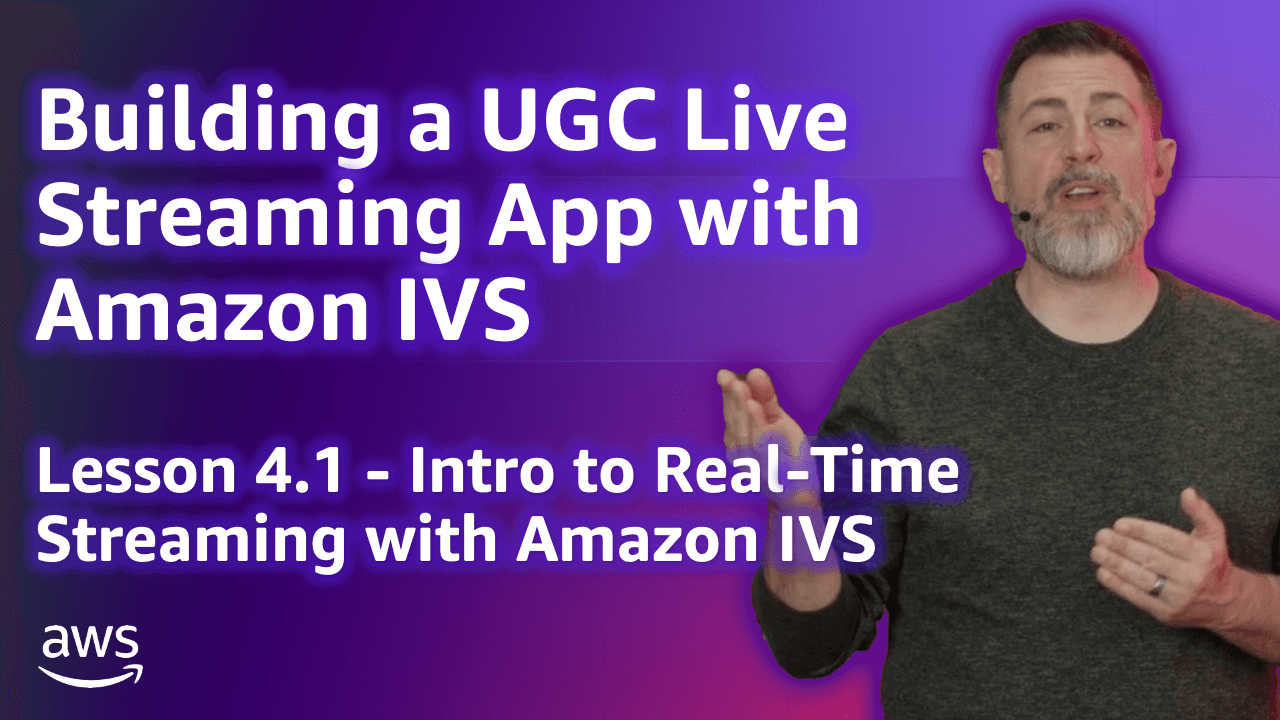
Build a UGC Live Streaming App with Amazon IVS: Intro to Real-Time with Amazon IVS (Lesson 4.1)
Welcome to Lesson 4.1 in this series where we're looking at building a web based user-generated content live streaming application with Amazon IVS. This entire series is available in video format on the AWS Developers YouTube channel and all of the code related to the sample application used in this series can be viewed on GitHub. Refer to the links at the end of the post for more information.
- A stage is a virtual space where participants can exchange video in real time.
- A host is a participant that sends local video to the stage.
- A viewer is a participant that receives video of the hosts.
- A participant is a user connected to the stage as a host or viewer.
- A participant token is a JWT token that authenticates a participant when they join a stage.
💡Note: StreamCat uses Web Broadcast for real-time streams. There is also full support for real-time live streams available via the Amazon IVS iOS Broadcast SDK, and the Amazon IVS Android Broadcast SDK. Refer to the documentation for further information.
Any opinions in this post are those of the individual author and may not reflect the opinions of AWS.
